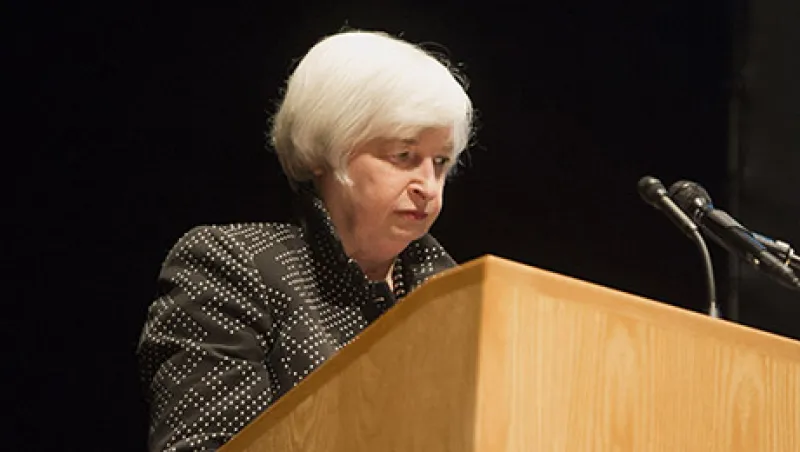The Federal Reserve has wanted to raise interest rates for a while now. There is a solid reason for that: A policy interest rate that flirts with zero is entirely fitting when the economy is in a slump of 2008–’09 financial crisis proportions, but after six years of economic growth that has halved the unemployment rate, zero interest rates are simply no longer appropriate.
Some analysts cite two other reasons, although we at State Street Global Advisors are not sure how much they factor into the Fed’s thinking. First, zero interest rates have almost certainly distorted asset prices — to what extent, however, is difficult to estimate. A renormalization of rates would begin to eliminate that problem, although the renormalization would have to be gradual to prevent any market overreaction. And second, the Fed has precious little ammunition to deal with any negative shocks to the economy, so it would be good to raise interest rates simply to reload the policy gun.
Plenty of economists expected the Fed to begin renormalization — or lift-off, as it has been dubbed — in June, July or September. So why did the Fed not raise interest rates at any of those meetings? One of the reasons is common to all three decisions, namely there was and is no smoking gun on inflation. Moreover, there is no reason to assume there will be one any time soon. And that means, although it would have been nice to get the fed funds rate target off the zero lower bound, it was not absolutely necessary to do so in June or July — or this month.
The second reason is more meeting-specific. When the Fed met in June and July, it seemed as if the U.S. economy had contracted in the first quarter of this year, and it was not going to rebound in the second quarter with anything like the same vigor as it did in 2014. It was that uncertainty about the underlying strength of the U.S. recovery that stayed the Fed’s hand on both occasions.
By the time the Fed met in September, however, the U.S. Department of Commerce had revised its estimates for GDP upward in both the first and second quarters, removing the contraction in the first quarter — albeit with only a small positive — and eventually installing a fairly robust 3.7 percent rebound in the second. Hence the stage appeared set for lift-off, and Fed rhetoric hardened enough to convince most economists of a September move, although, interestingly, the federal funds futures market never bought the idea.
The rationale behind the September decision was recent financial markets price action or, more specifically, the Fed’s perception of the reasons causing that price action. The rationale behind the decision is best summed up by a sentence newly inserted into the latest policy statement:
Recent global economic and financial developments may restrain economic activity somewhat and are likely to put further downward pressure on inflation in the near term.
Simply put, with global economic prospects so uncertain and financial markets so jittery, the Fed deemed the risks of undermining growth, contributing to volatility or having to reverse policy in short order as too high.
This was the entirely appropriate decision. It represents a low-risk, high-return strategy. With inflation benign, time is on the Fed’s side, allowing it to sit back and assess underlying economic conditions both at home and abroad before making any move.
A bigger surprise — at least to us — is that many economists still expect lift-off this year. Admittedly, the Fed has moved away from forward guidance and is stressing data dependency, so the outcome of every meeting is in play. It seems unlikely to us, though, that the current uncertainties surrounding the global economy in general, and emerging markets in particular, will be resolved any time soon. We suspect that this delay may be considerably longer than participants currently imagine.
Christopher Probyn is chief economist at State Street Global Advisors and is based in Boston.
See State Street Global Advisors’ disclaimer.
Get more on macro.






